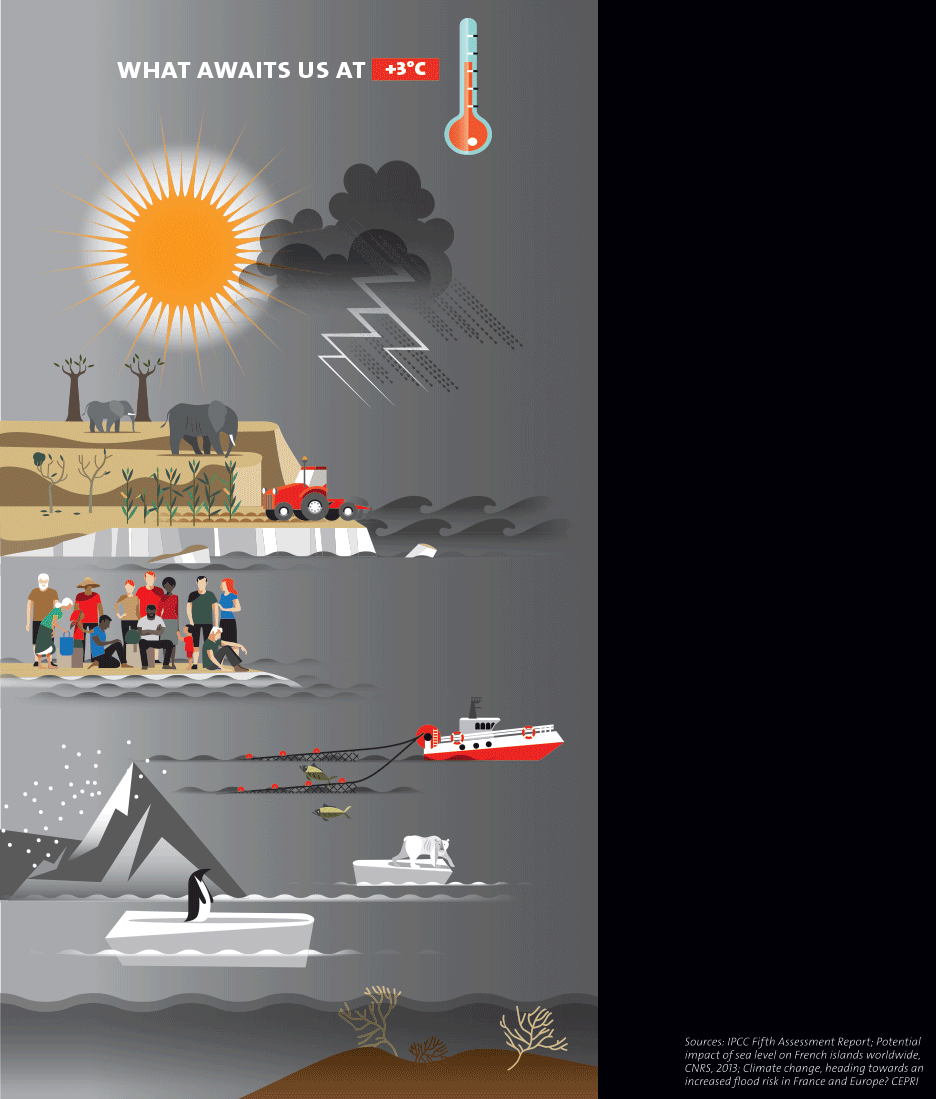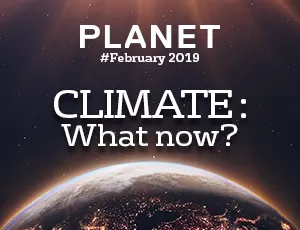Although the 2015 Paris Agreement set a target of limiting temperature increase to well below 2°C by the end of the century, the states’ current commitments would lead to global warming above 3°C by 2100.
In this scenario, the situation would become critical.
Southern Europe would be in a state of extreme and permanent drought - if not desertification – as would parts of the United States, much of the Middle East and some of the most densely populated areas in Europe. Australia, Africa and South America, causing acute food insecurity. In some cities like Marseille or Paris, temperatures would be around 50°C in the summer. Countries like Bangladesh and many big cities built below sea level would be flooded – for example Miami, New York, Tokyo, Singapore, Amsterdam and Rotterdam. The Pacific archipelagos, the Polynesian islands, the Maldives, the Philippines and more would disappear, leading to massive migration. One in six animal species would disappear from the surface of the globe. Coral reefs would dissolve as the oceans become more acidic.

Climate change, worst of 2018
It is therefore both urgent and vital for everyone to limit the rise in temperature to below 2°C.
And according to the IPCC (Intergovernmental Panel on Climate Change) report published in October 2018, it is still possible. As long as anthropogenic CO2 emissions are reduced by 45% by 2030 compared to 2010 and zero net emissions are achieved by 2050. This goal calls for rapid far-reaching transitions in all areas: energy, industry, building, transport, agriculture and natural resource management. The solutions are there, they just have to be implemented as quickly as possible.



